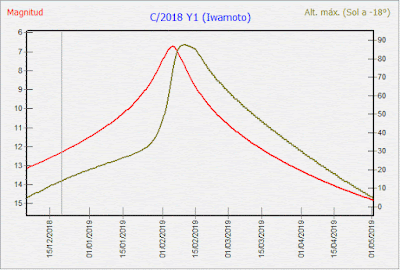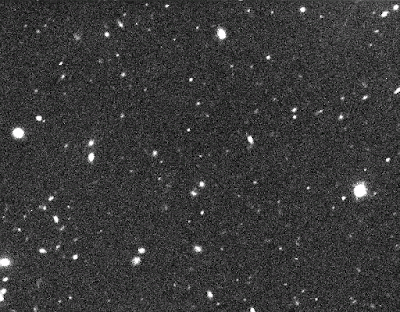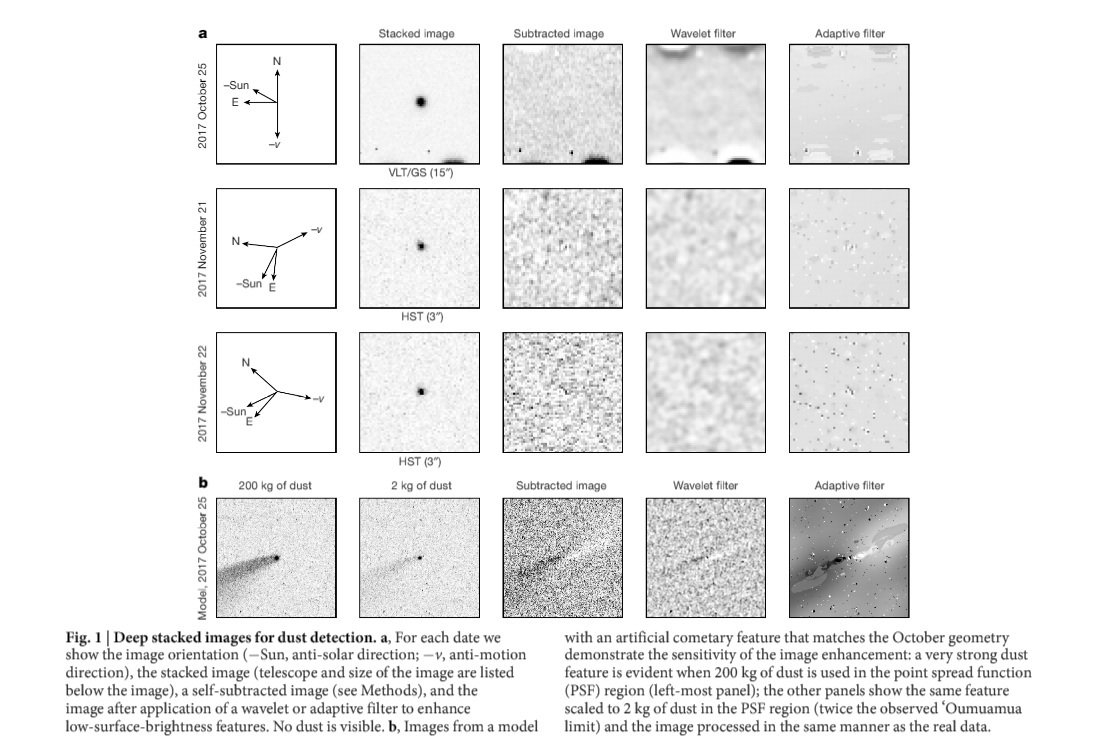CBET 4588 & MPEC 2018-Y52, issued on 2018, Dec. 20, announce the discovery of a comet (magnitude ~12) by M. Iwamoto (MPC code 872) in images taken on 2018 Dec 18.8. The new comet has been designated C/2018 Y1 (Iwamoto).
I performed follow-up measurements of this object, while it was still on the PCCP webpage. Stacking of 5 unfiltered exposures, 20 seconds each, obtained remotely on 2018, December 20.5 from H06 (T20 - iTelescope network) through a 0.1-m f/5.0 astrograph + CCD, shows that this object is a comet with a diffuse coma about 1.5 arcmin in diameter and sharp central condensation.
I performed follow-up measurements of this object, while it was still on the PCCP webpage. Stacking of 5 unfiltered exposures, 20 seconds each, obtained remotely on 2018, December 20.5 from H06 (T20 - iTelescope network) through a 0.1-m f/5.0 astrograph + CCD, shows that this object is a comet with a diffuse coma about 1.5 arcmin in diameter and sharp central condensation.
My confirmation image (click on it for a bigger version)
MPEC 2018-Y52 assigns the following preliminary parabolic orbital elements to comet C/2018 Y1: T 2019 Jan. 27.16; e= 1.0; Peri. = 354.05; q = 1.14; Incl.= 160.69
Below you can see a graph generated using the software Orbitas and showing the predicted magnitude (in red) versus the maximum height (for Northern Hemisphere). (click on the image for a bigger version). Preliminar orbit has the comet 0.2 AU from Earth with a peak magnitude of about 6 at the beginning of February 2019! (as always with comets, the future magnitudes reported here are only indicative). Elongation at the beginning of February 2019 will be 160 degrees (maximum height will be very good for Northern Hemisphere at peak that is around 80 degrees, good for Southern until few days before peak then decreasing fast).
Congrats to Masayuki Iwamoto for his third comet discovery (the last one was just one month ago)! (see here for more info about his previous discoveries C/2018 V1 & C/2013 E2)
Below you can see the discovery image taken by M. Iwamoto at 05:11am of December 19, 2018 (Japanese Time) and the discoverer itself with his equipment.
 |
| Credit: M. Iwamoto |
 |
| Masayuki Iwamoto - Credit: Hoshinavi |
by Ernesto Guido
































